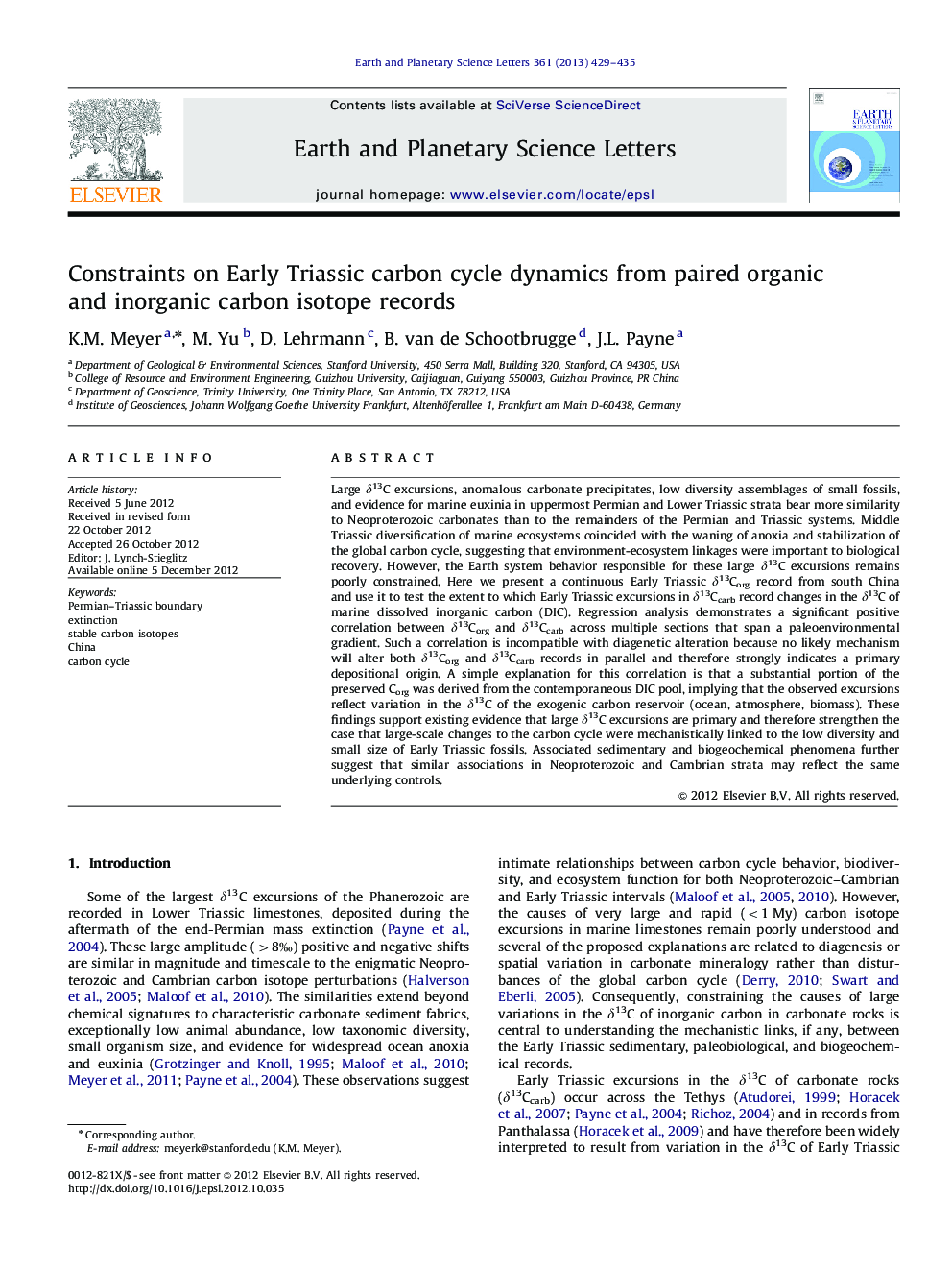| Article ID | Journal | Published Year | Pages | File Type |
|---|---|---|---|---|
| 4677194 | Earth and Planetary Science Letters | 2013 | 7 Pages |
Large δ13C excursions, anomalous carbonate precipitates, low diversity assemblages of small fossils, and evidence for marine euxinia in uppermost Permian and Lower Triassic strata bear more similarity to Neoproterozoic carbonates than to the remainders of the Permian and Triassic systems. Middle Triassic diversification of marine ecosystems coincided with the waning of anoxia and stabilization of the global carbon cycle, suggesting that environment-ecosystem linkages were important to biological recovery. However, the Earth system behavior responsible for these large δ13C excursions remains poorly constrained. Here we present a continuous Early Triassic δ13Corg record from south China and use it to test the extent to which Early Triassic excursions in δ13Ccarb record changes in the δ13C of marine dissolved inorganic carbon (DIC). Regression analysis demonstrates a significant positive correlation between δ13Corg and δ13Ccarb across multiple sections that span a paleoenvironmental gradient. Such a correlation is incompatible with diagenetic alteration because no likely mechanism will alter both δ13Corg and δ13Ccarb records in parallel and therefore strongly indicates a primary depositional origin. A simple explanation for this correlation is that a substantial portion of the preserved Corg was derived from the contemporaneous DIC pool, implying that the observed excursions reflect variation in the δ13C of the exogenic carbon reservoir (ocean, atmosphere, biomass). These findings support existing evidence that large δ13C excursions are primary and therefore strengthen the case that large-scale changes to the carbon cycle were mechanistically linked to the low diversity and small size of Early Triassic fossils. Associated sedimentary and biogeochemical phenomena further suggest that similar associations in Neoproterozoic and Cambrian strata may reflect the same underlying controls.
► The relationship between Early Triassic biotic recovery and δ13C instability is poorly constrained. ► Here we present a paired record of δ13C in carbonates and organic carbon. ► Regression analysis shows a positive correlation between δ13Ccarb and δ13Corg. ► Isotope excursions reflect changes in δ13C of the exogenic reservoir, not simply diagenesis. ► The δ13C excursions reflect perturbations of the carbon cycle that likely impacted biotic recovery.
